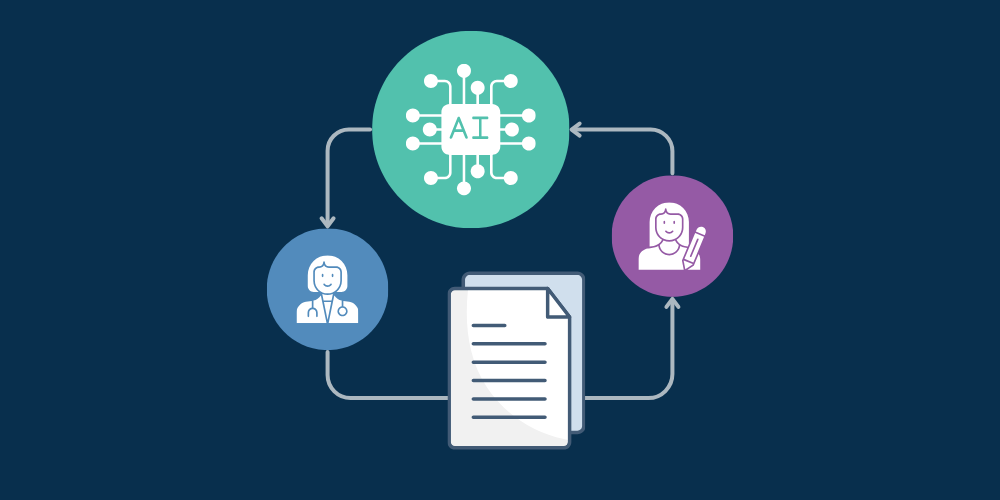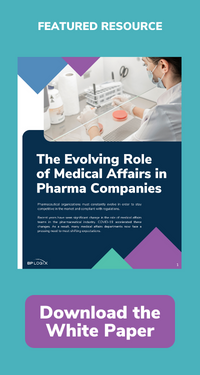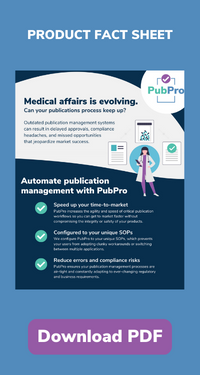
The FDA’s Accelerated Approval Program was created to fast-track life-saving drugs for serious diseases, allowing life science companies to bring new treatments to market faster while completing follow-up studies.
However, recent government reviews have raised concerns about the program’s management and prompted new regulatory guidance. For life science companies, these evolving regulations introduce greater complexity, increasing the need for structured, transparent compliance processes.
Let's explore how shifting FDA requirements are raising compliance challenges — and how automation can help companies improve documentation, streamline regulatory reviews, and stay ahead of evolving expectations.
Regulatory uncertainty heightens compliance hurdles
Recent developments highlight a growing regulatory emphasis on compliance transparency and structured approval processes, making it more critical than ever for companies to ensure rigorous tracking and documentation.
The FDA recently issued new guidance clarifying that confirmatory trials must be “underway” before accelerated approvals are granted, but what qualifies as “underway” remains unclear. This lack of clarity creates uncertainty for life sciences companies, which now risk approval delays or even rejections if they fail to meet undefined criteria.
Meanwhile, the Office of Inspector General (OIG) identified serious gaps in regulatory documentation, revealing that some drugs were approved despite concerns from FDA reviewers and without complete records of key regulatory meetings. This lack of proper tracking makes it difficult for companies to demonstrate compliance, increasing regulatory risk.
Together, these developments highlight a common challenge: companies must improve their ability to track, document, and manage compliance at every stage of the regulatory process — from initial approvals to post-market commitments.
Without the right systems in place, companies risk approval delays, regulatory scrutiny, and potential product withdrawals. The stakes are high, and traditional, manual methods are no longer enough to keep up. To stay ahead, companies must move toward structured, automated solutions that improve compliance tracking, document management, and approval workflows.
The role of automation in reviews and approvals
A structured, automated solution is essential to keeping up with evolving FDA requirements, but what does that actually look like in practice?
The following four automation capabilities — available in solutions like PubPro and Approvia — help regulatory teams streamline compliance, improve documentation, and ensure timely approvals.
1. Pre-approval compliance tracking
Under the FDA’s new guidance, regulatory teams must now prove that confirmatory trials are “underway” before receiving accelerated approval. However, because the agency has not defined what qualifies as ‘underway,’ companies risk approval delays or rejections due to insufficient documentation or unclear trial status.
Automating pre-approval compliance tracking helps eliminate these risks by:
- Capturing real-time trial progress to provide documented proof that a trial meets the FDA’s “underway” criteria.
- Maintaining an auditable trail of trial milestones and regulatory submissions for compliance verification.
- Triggering automated alerts for submission deadlines, preventing missed timelines and regulatory setbacks.
2. Centralized document management
The OIG’s investigation revealed that some drug approvals lacked proper documentation—including missing records of key FDA meetings. Without accurate, complete regulatory documentation, companies may struggle to demonstrate compliance if approvals are questioned.
By centralizing and automating document management with a solution like Approvia, companies eliminate the risk of lost or incomplete records that could jeopardize approvals.
Centralized document management helps by:
- Maintaining a single source of truth for all regulatory documents, ensuring no critical records go missing.
- Providing version control & automated audit trails, tracking every document change for complete transparency.
- Allowing instant access to historical regulatory discussions to ensure teams can quickly provide documentation when requested by the FDA.
3. Automated approval workflows
Disorganized approval workflows can lead to submission delays and compliance risks. Without automation, bottlenecks form, approvals stall, and deadlines for confirmatory trials and regulatory reviews are missed.
Automating approval workflows ensures efficiency by:
- Ensuring all required reviewers sign off before submission with pre-configured workflow templates.
- Automating routing and task assignments to eliminate delays caused by manual approval processes.
- Enforcing built-in compliance checks to prevent incomplete or incorrect submissions from reaching regulators.
4. Post-approval compliance monitoring
Under the Accelerated Approval Program, companies must conduct post-marketing confirmatory trials to retain FDA approval. However, with stricter oversight, companies that fail to meet commitments face increased regulatory enforcement, fines, or drug withdrawals.
Automating post-approval compliance monitoring ensures ongoing regulatory adherence by:
- Sending automated deadline reminders to reduce the risk of missing post-marketing commitments.
- Providing real-time dashboards to track study progress and regulatory milestones.
- Deploying automatic escalation alerts when compliance risks arise, allowing proactive course correction.
A shifting regulatory landscape demands a smarter compliance approach
As regulatory scrutiny increases, life science companies must evolve their compliance strategies to maintain efficiency, streamline approvals, and minimize risks. Companies that fail to adapt to changing FDA requirements risk delays, compliance failures, and even drug withdrawals.
By embracing automation, organizations can proactively manage compliance rather than reacting to last-minute regulatory concerns. The benefits include:
- Avoiding regulatory penalties by ensuring compliance with evolving FDA requirements.
- Reducing manual errors with automated documentation and workflow management.
- Accelerating approvals by keeping submissions on track and minimizing regulatory bottlenecks.
- Protecting drug investments by avoiding pitfalls that could lead to delayed approvals or product withdrawals.
Automation is no longer optional. It’s essential.
By leveraging AI-driven document management, workflow automation, and structured approval tracking, companies can proactively manage compliance risks and ensure regulatory success.
Learn how PubPro and Approvia can help your team automate regulatory processes and stay ahead of compliance changes. Contact us to request a demo today.



 I’m Alex Reinthal, and as Vice President of Product at BP Logix, I have a unique vantage point on how AI and machine learning technologies will develop in life sciences software.
I’m Alex Reinthal, and as Vice President of Product at BP Logix, I have a unique vantage point on how AI and machine learning technologies will develop in life sciences software.








